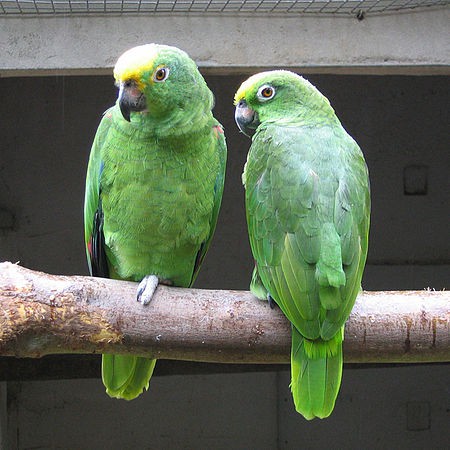Type the name of the breed you're looking for below
[wpdreams_ajaxsearchlite] Don't see the breed your're looking for? Click here and let us know!
Yellow Fronted Amazon Parrot
| Origin | The Yellow Fronted Amazon Parrot, Yellow-crowned Amazon or Yellow-crowned parrot, is a species of parrot, native to the tropical South America and Panama. |
| Size | This species can grow up to 15 in(38 cm) |
| Lifespan | Can live up to 80 years |
| Noise | Moderate, talkative birds. |
| Characteristics | As most other amazon parrots, it has a short squarish tail and primarily green plumage. It has dark blue tips to the secondaries and primaries, and a red wing speculum, carpal edge (leading edge of the wing at the "shoulder") and base of the outer tail-feathers. The red and dark blue sections are often difficult to see when the bird is perched, while the red base of the outer tail-feathers only infrequently can be seen under normal viewing conditions in the wild. |
| Abilities | These birds can mimic quite well. Able to remember several sentences or words. |
| Interaction/Time Requirements, Diet, Supplies Needed | Parrots do well in aviaries and cages. They don't like to be in crowded spaces and will sometimes be aggressive towards other birds if they don't have enough space. Parrots can also be hand reared, provided that they have a large cage and are taken out of their cage on a daily basis to prevent boredom, as it may result in the parrot pulling out its feathers to occupy itself. They require a warm habitat for the winter months. Do not allow your birds outdoors until all signs of frost are gone. Space is important and indoor cages should be as large as possible. A large cage is required even if the bird is going to spend lots of time out of its habitat with you. Their diet in the wild consists of mainly fruits, wild figs, unripe nuts, flower and leaf buds, and some seeds. In captivity, they will eat most fruits including mangos, figs, guavas, bananas, melons, stone fruits, grapes, citrus fruits, pears, apples, pomegranate and papaya (pawpaw). You need to change food and water daily, and clean the cage at least once a week, replacing toys and broken climbing branches. |



